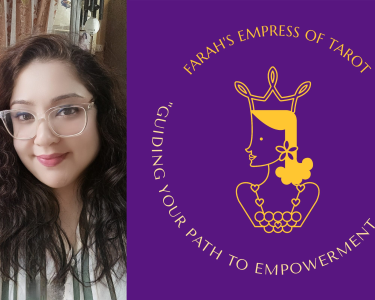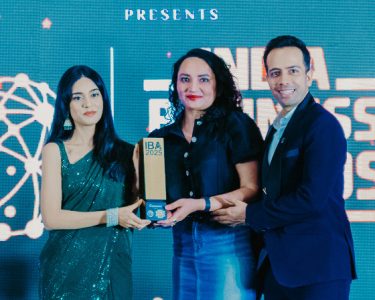In an era where technology is reshaping industries, Amenify India has emerged as a trailblazer in the field of interior design. With its innovative use of Augmented Reality (AR) and Virtual Reality (VR), the company has redefined how people experience and design their homes and offices. Led by Danish Chopra, a visionary entrepreneur with over 15 years of experience, Amenify is changing the way we approach design, making it more efficient, immersive, and personalized.
The Visionary Leaders Behind Amenify
Danish Chopra, the Co-founder, CTO, and COO of Amenify, is no stranger to the world of innovation. With a background in Computer Science and advanced degrees from the University of Illinois and Stanford University, Danish brings a wealth of knowledge and experience to the table. Before founding Amenify, Danish had stints at major global companies like Uber and Cisco in Silicon Valley, where he honed his skills in cutting-edge technologies. His work has been published in 11 international journals and conferences, and he holds five patents.
Danish’s co-founder, Everett Lynn, shares his vision of simplifying the traditionally complex and opaque interior design process. Together, they founded Amenify India in 2017, a company dedicated to transforming the way interior design services are provided through technology.
The Birth of Amenify India
The idea for Amenify came about after Danish Chopra and Everett Lynn recognized a significant gap in the interior design industry. The process of designing a space, whether a home or office, was often lengthy, opaque, and stressful for clients. The traditional design methods left clients with little sense of control and clarity, often leading to costly errors or dissatisfaction with the final results.
In response, Amenify was born out of a desire to modernize the design process and leverage technology to bring clarity, confidence, and efficiency to both clients and design teams. By combining cutting-edge AR/VR technology with expert design, Amenify aimed to solve the longstanding pain points of interior design, making it a more enjoyable and less error-prone experience for everyone involved.
A Revolutionary Approach to Interior Design
At the core of Amenify’s offering is its patented 3D Virtual Reality experience, which allows clients to take a virtual walkthrough of their potential spaces before any construction work begins. This immersive technology allows clients to explore their future home or office in stunning detail, making real-time adjustments and visualizing their design choices as though they were already in the space. This process not only saves time and reduces errors but also offers a level of personalization that traditional methods cannot match.
For Danish Chopra, the ability to experience a design in 3D is one of the most significant advantages Amenify provides. “We’re not just designing spaces; we’re offering a fully immersive experience. Our clients can see, feel, and interact with their future environments long before they’re built,” he says. This capability not only builds confidence in the design choices but also leads to more informed decisions that ultimately save time and money.
Amenify also helps bridge the gap between technology and human emotion by considering client psychology in the design process. Danish believes that a client’s home or office is a reflection of their personality, values, and lifestyle. “Our role is not just to design a space that works functionally but one that resonates emotionally with the client,” he explains.
The Challenges of Entrepreneurship and Overcoming Them
Like any entrepreneurial journey, Amenify’s path has not been without its challenges. As the company grew, it faced the complexities of scaling its operations and continually refining its technology to meet market demands. One of the biggest hurdles Danish faced was navigating the hyper-growth phase, where it was essential to remain adaptable while balancing innovation with practical implementation.
Managing the balance between personal and professional life was another challenge that came with the territory. “Entrepreneurship demands a lot of time, energy, and focus. Overcoming that requires good time management and setting clear priorities,” Danish shares.
However, despite these struggles, Danish’s entrepreneurial mindset remained focused on long-term success. His ability to adapt, learn, and push forward despite setbacks played a vital role in overcoming these challenges. His entrepreneurial journey was not just shaped by professional experience but also by his commitment to solving problems that made a tangible difference in people’s lives.
Why Amenify’s Approach is a Game-Changer
Amenify’s technology-driven approach is what truly sets it apart from traditional interior design companies. The use of AR/VR technology ensures that clients can visualize their spaces in real-time and make interactive adjustments as needed. This level of personalization and flexibility is a game-changer in an industry that often struggles with design errors, time delays, and cost overruns.
Moreover, Amenify’s expertise extends beyond just visualization. The company provides a comprehensive end-to-end solution that includes design, construction, and implementation, all while ensuring a seamless experience for the client. From the initial 3D walkthrough to the final physical construction, Amenify’s approach ensures that the final outcome matches the client’s vision in every way.
The Success of Amenify’s Projects
Among the many projects Amenify has worked on, one that stands out is the Shri Ram Wonder Years School. This project was a special one for the team at Amenify because it involved transforming the learning environment for students, making it both inspiring and conducive to learning. The project was completed in just three months, overcoming numerous design and operational challenges.
The ability to deliver high-quality results on a tight timeline is a testament to the efficiency and innovation Amenify brings to every project. The company’s expertise in using technology to streamline the design and construction process allows it to meet client needs more quickly and effectively than traditional methods.
The Future of Amenify India
Looking ahead, the future for Amenify is incredibly promising. As AR and VR technologies continue to evolve, so too will the company’s ability to offer more advanced and immersive design experiences. “We are just scratching the surface of what is possible with AR and VR,” Danish notes. “The technology is improving every day, and we’re continuously working to enhance our offering.”
Furthermore, Amenify plans to expand its reach in both the U.S. and India, capitalizing on the growing demand for tech-driven interior design solutions. With the rise of remote work and the increasing importance of creating personalized and functional living and working spaces, Amenify is well-positioned to lead the way in this new era of design.
Sustainability and Green Architecture at Amenify
Sustainability is a topic that resonates deeply with Amenify. The company strongly supports the trend toward green architecture and sustainable design practices. By using AR/VR technology, Amenify helps clients make more informed decisions that can lead to more eco-conscious building choices. Danish believes that technology can play a significant role in reducing waste and creating more efficient, sustainable designs.
Lessons Learned and Advice for Future Entrepreneurs
Danish Chopra’s journey is a testament to the power of resilience, adaptability, and the relentless pursuit of innovation. His experiences have taught him the value of continuous learning and the importance of embracing change in order to stay ahead of the curve. “The key to entrepreneurship is not just working hard but being willing to adapt and pivot when necessary. It’s about solving real problems and constantly improving,” he advises.
For budding architects, designers, and entrepreneurs, Danish’s message is clear: embrace curiosity, continuously learn, and never stop innovating. “The future belongs to those who can think outside the box and solve problems creatively,” he concludes.





